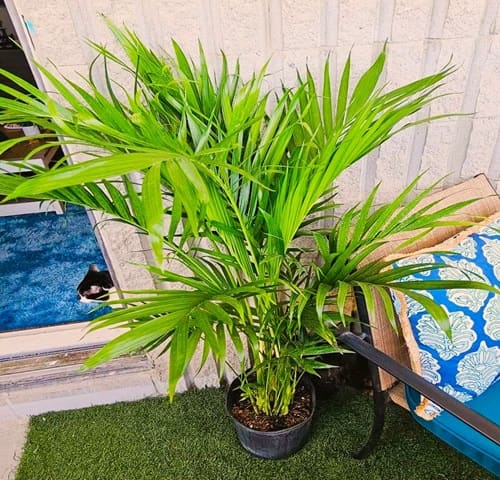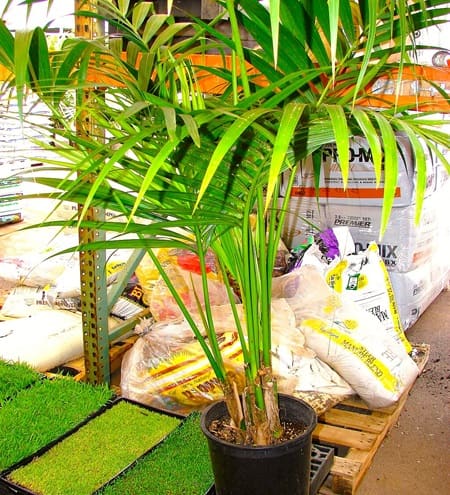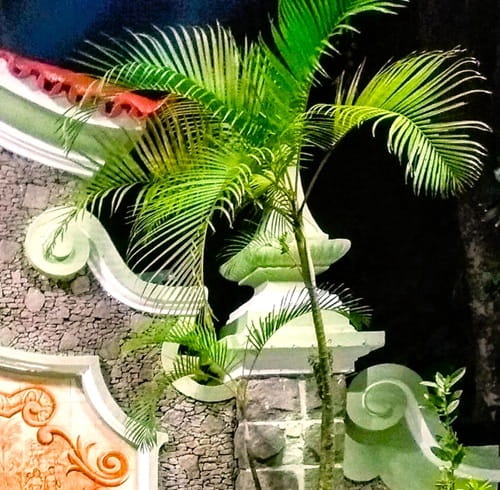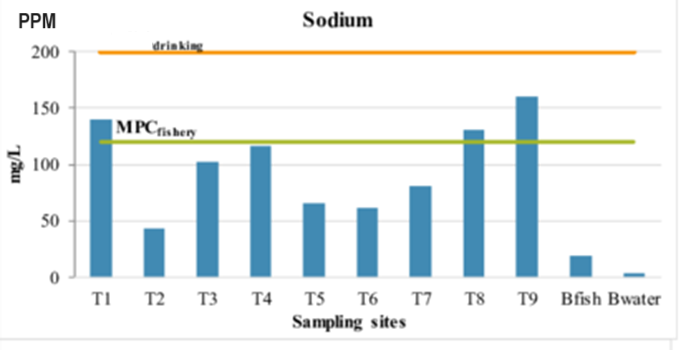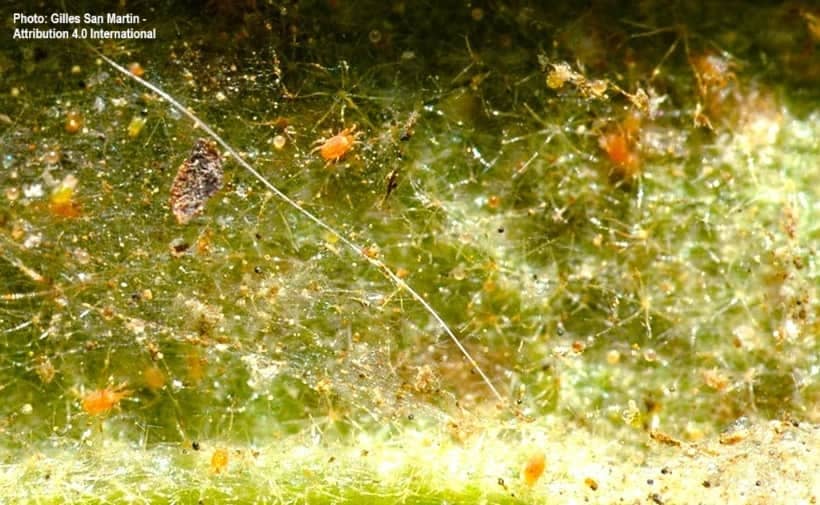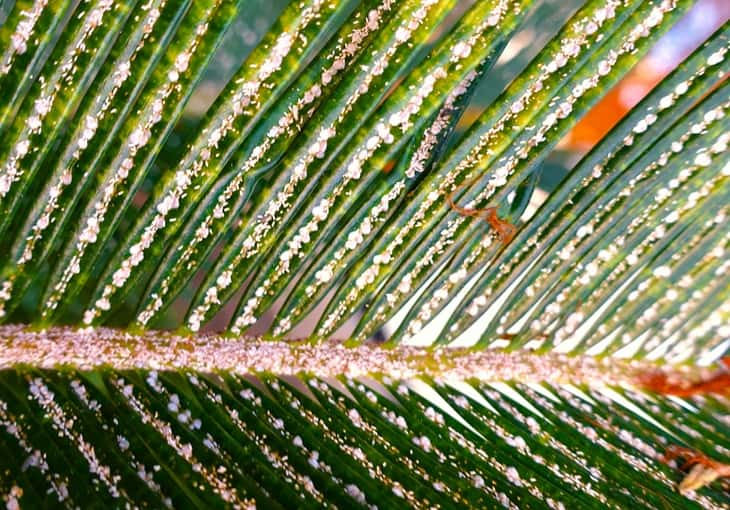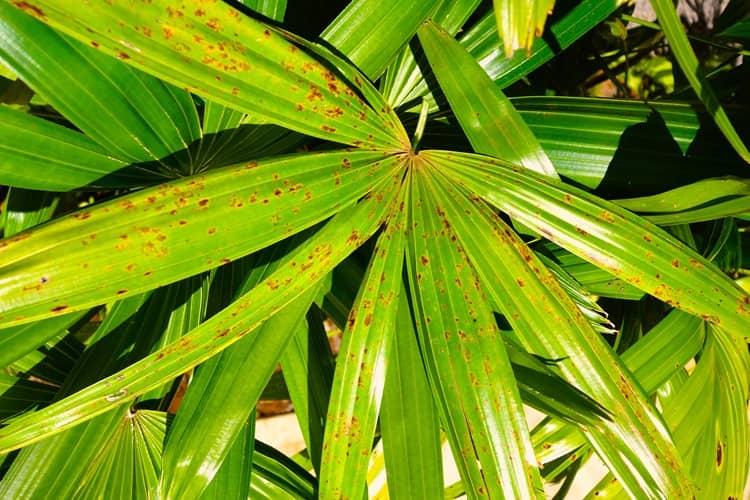- Home
- Caring For Palms
- Indoor Palm Care
- Indoor Palm Dying?
Indoor Palm Tree Dying?
Is an indoor palm tree dying? Or you think so, because it looks less than lively!
A disheartening experience, for sure. Seeing a plant you love decline. You're not alone in this. Other palm enthusiasts have faced that challenge. Including us - making me finally keep to outdoor palms. Yet we learned some things about how to keep an indoor palm tree from dying. Still we decided to keep fake palms indoor instead. 😮
Yes, we learned reasons why an indoor palm tree could struggle. Let us show you how to address ill-health of your indoor palm tree.
Feeling overwhelmed by so many palm trees?
You're not alone. We Understand your headaches! At Mission: Palm Trees you'll find clear answers to questions & Step-By-Step Guidance, from real people. With solutions to help. No puzzling shoptalk. No tiring research. So it's easy & fun for you.
First Things First: there's a saying in the plant world: Get the Right Plant Into the Right Place!
It's important to know which palms do fine inside the house. The thing is, be sure you know requirements of the indoor palm tree species you think is dying. When you're seeing fronds change color from green to yellow or brown, or get spotty!
If you know it's Suitable For Growing Indoors in a container, you have a good chance of solving your palm's problem. If it's not too far gone.
What's the Lighting Your Indoor Palm Receives?
Most palms growing in their native habitat like full sunlight.
But some are good for bright, indirect lighting. Like those who are naturally from rainforests. Yet they still need sunlight sprinkling on them through the upper forest canopy.
Is your palm trying to survive in a room's dim corner? That might be the essential problem.
Many homes only have 150 Foot-Candles of Light throughout the day. (Use a light meter to measure yours.)
 Oh - That's Not Right! 😉
Oh - That's Not Right! 😉Palm Trees Most Suited to Lower Light
A range of palms are most suited for indoors. Their light needs are between 25 to 200 ft-c. Is your palm one of these below, within that range? If not, that may be why your indoor palm tree is dying.
You could try moving it to a better location. Near a south or west facing window which receives good lighting.
Best Palm Tree Species for 25 to 50 ft-c
A few palms tolerate these low light levels.
- Many are those in the Chamaedorea genus.
- Cat Palms, Neanthe Bella, Metallic Palm, Hardy Bamboo Palm & the Reed Palm.
- Also C.erumpens & C.radicalus.
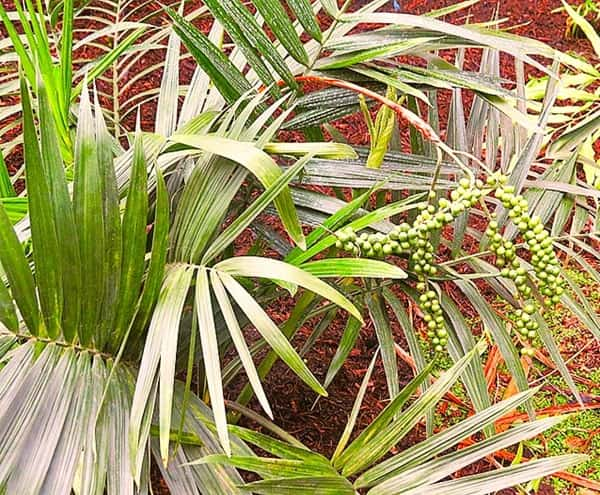 Chamaedorea radicalis Palm Grows Outdoors, But Good for Indoors too!
Chamaedorea radicalis Palm Grows Outdoors, But Good for Indoors too!- Plus two more options:
- Howea forsteriana, the Kentia Palm may be the least sun needing of all.
- Rhapis excelsa, the Lady Palm.
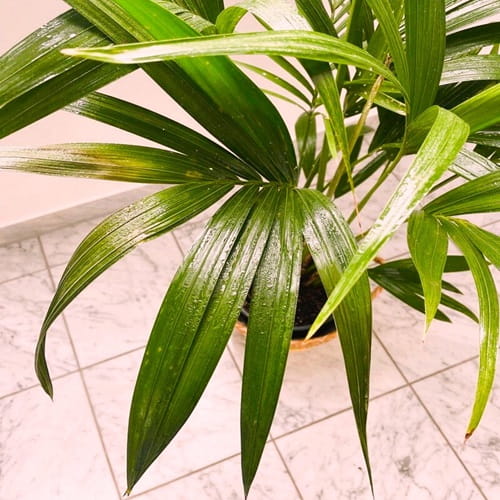 Do You Have a Lady Palm?
Do You Have a Lady Palm?Best Palm Species for 100-200 ft-c
These are palms promoted for indoor capability.
- Queensland Kentia (Laccospadix australasica), Miniature Coconut Palm (Lytocaryum weddellianum), Solitaire Palm (Ptychosperma elegans) & the Ivory Cane Palm (Pinanga coronata)
- Several in the genus of Licuala.
- The beautiful Ruffled Fan Palm (L.grandis) & one similar: L.orbiculaaris.
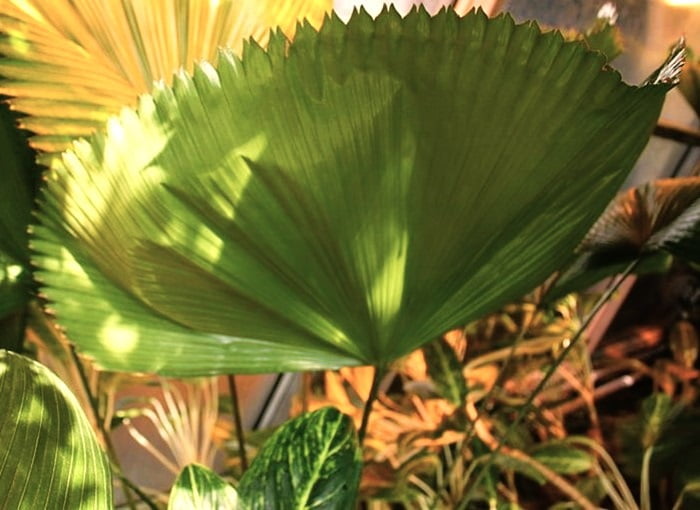 Ruffled Fan Palm Makes Its Appearance - Sure to be Admired!
Ruffled Fan Palm Makes Its Appearance - Sure to be Admired!Recent Post at MPT
-
Backyard Palm Tree Ideas Make Your Space Feel Like a Tropical Escape
Bring a resort feel home. Explore inspiring backyard palm tree ideas with themes like clustering, layering, and lighting designs for any space.
Is Your Watering Schedule Good for Your Palm?
Too Much of a Good Thing?
Overwatering is probably the most common mistake with an indoor palm tree dying. Much more common than underwatering. Too much water "drowns" roots, so they can't absorb oxygen.
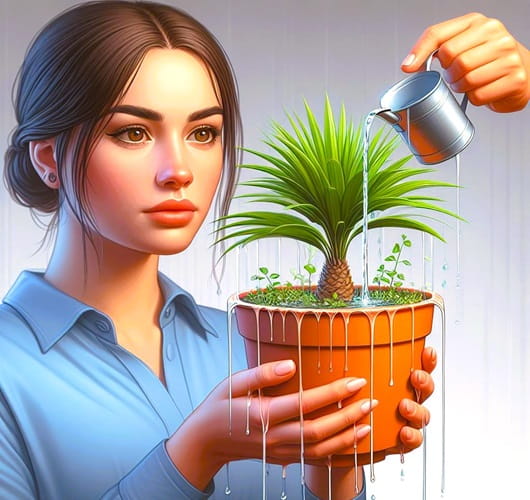 Nooo! That's Way Too Much Water!!
Nooo! That's Way Too Much Water!!Few studies are available that show water requirements for all palms. But we know overwatering Causes Palm Problems like root rot from fungi, wilting and/or yellowing fronds.
When first transplanted, a container palm needs evenly moist soil (not soggy) for the first 4-6 weeks. After that, water when the soil's top inch is fully dry.
Other watering problems
Miscellaneous moisture possibilities for your indoor palm tree dying:
- Your palm's container has drainage holes, correct? Remove drained water from the collection saucer. Is the potting mix well-draining?
- Are your winters cold? Water pipes could bring in water that chillingly shocks your palm's roots.
- Water's salt content matters. Most palms don't like it. Get mineral content from your water provider.
More Watery Possibilities
Palms like higher humidity. Problem is heating or cooling both decrease a home's interior humidity levels. Palms also like warmer air temperatures, which helps (to a point) keep air moisture higher.
If your home is too dry or too cool, your palm might struggle. Try increasing humidity near the palm with a room humidifier or a nearby water feature.
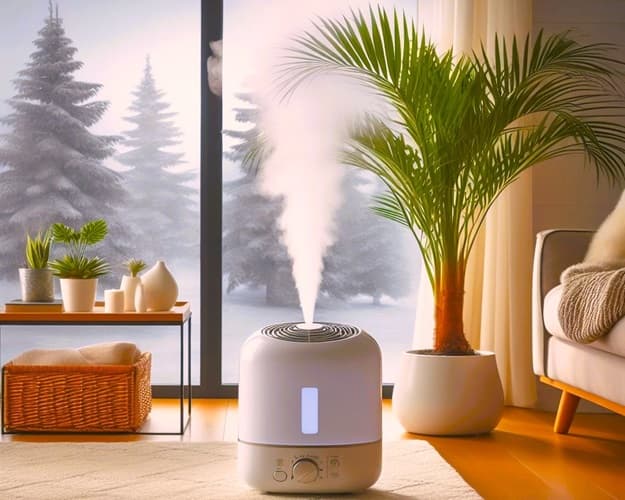 Humidifier Helps Indoor Palm Get Through the Winter
Humidifier Helps Indoor Palm Get Through the WinterCan Fertilizing Mistakes Cause Indoor Palms to Die?
Yellowing Fronds, and also Browning Leaves can mean nutritional problems. Indoor palms should have slow-release fertilizer mixed into soil, when first potting them. That supplies its needs for about a year. Had the nursery fertilized before You First Purchased?
The Best Fertilizer is specialized for palms. Even better for indoor palms is time-release fertilizer with 3% Nitrogen, 1% Phosphorus & 2% Potassium.
Yet beware of overdoing. Leaf tips & edges turning brown are hints that's happening.
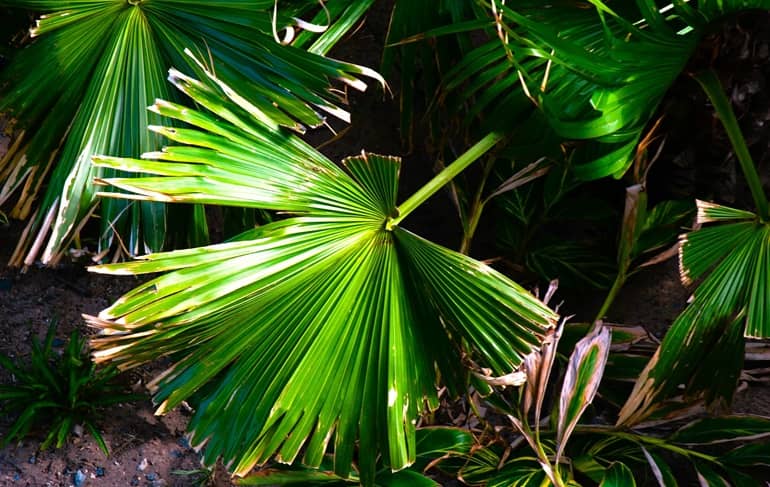 Frond has Brown Tips, Edging to Sides of Segments
Frond has Brown Tips, Edging to Sides of SegmentsInterior palms grow slowly, if at all. Meaning their Nutritional Needs are way less than outdoor palms.
- Is there yellowing between green veins on new leaves. Iron deficiency is most likely.
- That problem is likely from overwatering, not from needing additional iron.
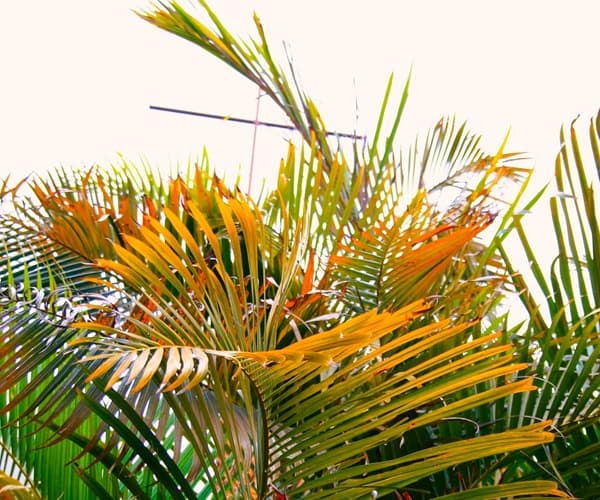 Frond's green vein remains, surrounded by yellowing.
Frond's green vein remains, surrounded by yellowing.Palm Tree Pests and Diseases in the Home
Pests Attacking Indoor Palm Trees
Palm pests suck sap from fronds. Watch for signs to get on top of it right away. Prevention is easier than treatment.
Most Likely Bug Attack on Indoor Palms
Spider Mites are the ones to especially look out for. The most common insect pest. Low interior humidity attracts them.
Here's prevention and/or attention solutions:
- Regularly look at frond undersides. Prevent attacks by squirting water there with a large syringe.
- Are you seeing tiny white threads? Spider mites are there!
- Use your syringe to flush those areas with water, rinsing the mites away.
Mealybugs and Scale Insects are less common, but attacks can happen. Not only on leaves, but also roots. May lead to your indoor palm tree dying.
Regularly inspect your palm for signs of infestation. To quickly treat it use insecticidal soap or a biopesticide like neem oil.
Indoor Palm Tree in Old Age & Disease Possibilities
Fungi Attacks Don't Make for Fun Guys!
With proper watering & feeding schedules, diseases for indoor palms are rare. However occasionally some experience fungal attacks.
- Pink Rot affects Chamaedorea species & Dyspis lutescens palms. Pink spores appear anywhere on The Palm's Parts. With dark mushy areas on stems, and leaves dropping.
- Treat by removing affected fronds, if it only involves a few leaves.
- Otherwise alternate using several indoor universal fungicides, following the directions.
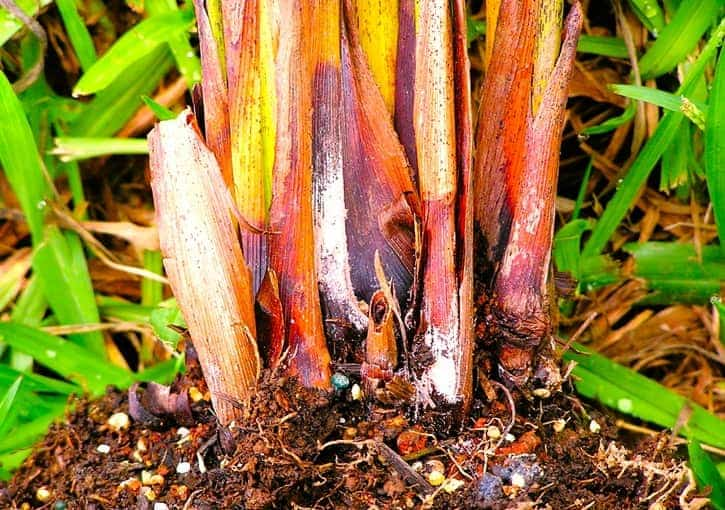 Pink Root Rot Visible at the Bottom of Potted Palm Trunks.
Pink Root Rot Visible at the Bottom of Potted Palm Trunks.- Leaf spot can strike even more often. Most susceptible are Lady Palms & Kentia Palms. Yellow spots appear, turning brown/black. Yellow edges remain around the spot.
- Best is prevention with an airy environment & not overwatering.
- Treatment means catching it early to remove affected fronds. If you're too late, sorry, it's likely your indoor palm tree is dying. Then toss it so fungi doesn't spread to other plants.
Consider the Palm's Age & Lifecycle
Shorter Lifespans are a fact for indoor palms. Compared to the same palm planted outdoors.
As a palm gets into old age (called senescence), older leaves die. Palms with crownshafts will drop them automatically. With others, you can Prune Them Off, but only if no green is left.
Has Your Palm Outgrown its current pot? Stress from crowding happens when roots circle the bottom third of the container. Causing excess soil moisture above, where roots aren't available to suck in water.
Give the palm a larger pot. So roots have room to grow. Use fresh potting soil treated with fungicide, and a clean pot to help prevent disease.
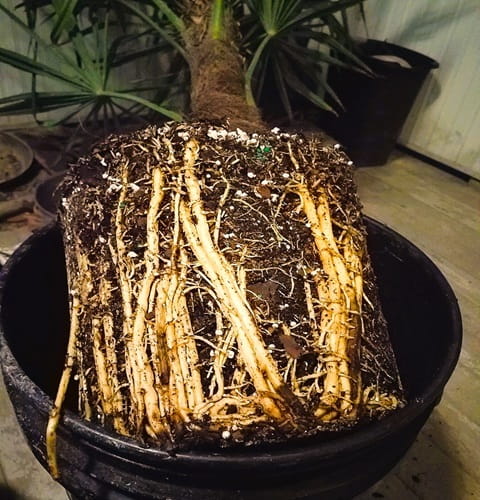 Root bound Windmill Palm is Transplanting from 2-Gallon Pot to a 5. Okay for Indoors in a Cool Area - Like an enclosed patio.
Root bound Windmill Palm is Transplanting from 2-Gallon Pot to a 5. Okay for Indoors in a Cool Area - Like an enclosed patio.Final Evaluation of Your Indoor Palm
Reviving a dying indoor palm tree isn't always obvious, quick or easy.
Now, you've tried everything and your palm still isn't perking up?! Consider consulting a professional. An expert may spot surprising issues & suggest treatments. Or they may suggest other changes to your care routine.
Takeaways for Indoor Palm Tree Dying
It's possible with the right approach and a bit of patience to treat problems, if you believe your indoor palm tree is dying. Prevention is best by monitoring your palm & its environment.
We hope our tips have given you hope, if your indoor palm tree is showing signs of distress. By understanding potential causes and adjusting your care techniques, it's possible to save a dying indoor palm. We're always here To Answer Your Questions about a palm doing poorly.
